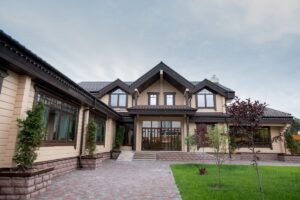Artificial turf has gained popularity as a low-maintenance alternative to natural grass, offering benefits such as water savings and durability. However, like any product, there are potential downsides that homeowners should be aware of before making the switch. In this blog, we will explore the key disadvantages of artificial turf to help you make an informed decision. For a comprehensive look at whether synthetic grass is the right choice for your home, visit our detailed guide on Artificial Turf in San Jose.
Initial Cost of Artificial Turf
One of the most significant downsides of artificial turf is the initial cost. Installing synthetic grass can be much more expensive than laying sod or growing natural grass. On average, artificial turf costs between $5 and $20 per square foot, which can add up to thousands of dollars depending on the size of your lawn. This high upfront cost can be a deterrent for some homeowners, especially those with large yards.
Although the initial investment is steep, it’s essential to consider the long-term savings on water bills, lawn maintenance, and fertilizers. For more insights on whether the cost is justified, take a look at our guide on Is artificial turf worth it?.
Heat Retention in Artificial Turf
Artificial turf can get hot, especially during the summer months. Unlike natural grass, which stays relatively cool, synthetic grass tends to absorb and retain heat, making the surface hot to the touch. This can be uncomfortable for pets, children, or anyone walking barefoot on the grass.
Some solutions to this issue include installing a cooling system underneath the turf or selecting newer artificial grass products that are designed to reflect heat. While these options can help mitigate the heat issue, they may increase the overall cost of installation.
Environmental Concerns
Although artificial grass conserves water and reduces the need for lawn care chemicals, it does have some environmental drawbacks. Synthetic turf is typically made from plastic materials that are not biodegradable. When artificial grass reaches the end of its lifespan (which can be 15 to 25 years), disposal becomes a concern. Some companies now offer recyclable options, but these are not yet standard across the industry.
Additionally, artificial grass doesn’t provide the same ecological benefits as natural grass, such as carbon absorption and supporting local wildlife. Natural lawns can play a role in reducing carbon footprints and offering habitats for insects and small animals, which artificial turf cannot.
Lack of Natural Feel
While modern artificial grass has come a long way in terms of appearance, it still doesn’t replicate the natural feel of real grass. Many people appreciate the softness and coolness of natural grass underfoot, which artificial turf lacks. This can be a drawback for homeowners who enjoy spending time barefoot on their lawns or want a natural play area for kids and pets.
Furthermore, artificial grass doesn’t offer the same pleasant smell that comes from freshly cut grass after mowing. The texture, although close to real grass, may feel artificial to some, especially when compared side by side with a well-maintained natural lawn.
Maintenance Requirements
One common misconception is that artificial grass is maintenance-free. While it requires significantly less upkeep than natural grass, there are still maintenance tasks that need to be performed regularly to keep it in good condition. Debris, such as leaves or dirt, can accumulate on the surface, requiring regular cleaning to maintain its appearance. In high-traffic areas, the grass blades may also get flattened, necessitating periodic brushing to keep them upright.
If you have pets, artificial grass will require more frequent cleaning to remove waste and prevent odors from building up. Additionally, some homeowners choose to replace the infill material (sand or rubber granules) over time to maintain the turf’s cushioning and resilience.
Water Drainage Issues
Although artificial turf is designed to allow water to pass through, improper installation or drainage issues can result in water pooling on the surface. If not correctly installed with a proper drainage system, standing water can lead to mold or mildew growth beneath the turf, creating unpleasant odors and potential damage to the underlying structure.
Working with experienced professionals who understand the importance of proper installation and drainage is critical to avoiding these issues. If you’re considering artificial turf, make sure the installation includes a well-planned drainage system to handle San Jose’s occasional rainstorms effectively.
Artificial Grass and the Environment
While artificial turf reduces the need for pesticides and fertilizers, its environmental impact still warrants consideration. As mentioned, most artificial grass is made from plastic, which contributes to plastic waste. However, many manufacturers are now creating more sustainable, recyclable options, which can help reduce the turf’s long-term environmental footprint.
On the plus side, artificial grass can significantly reduce water consumption, which is crucial in areas like San Jose, where droughts and water restrictions are common. Homeowners can enjoy a green, lush lawn without the guilt of overusing precious water resources.
Is Artificial Turf the Right Choice for You?
While there are clear downsides to artificial turf, many homeowners find that the long-term benefits outweigh the drawbacks. Reduced water usage, minimal maintenance, and a year-round green lawn make synthetic grass an appealing option, particularly in drought-prone areas like San Jose. However, if you value the feel and environmental benefits of natural grass, artificial turf may not be the best fit for your home.
To determine whether synthetic grass is the right choice for your property, explore more about the pros and cons on our page, Is artificial turf worth it?. You can also contact us today for a consultation and personalized advice on your lawn transformation.






